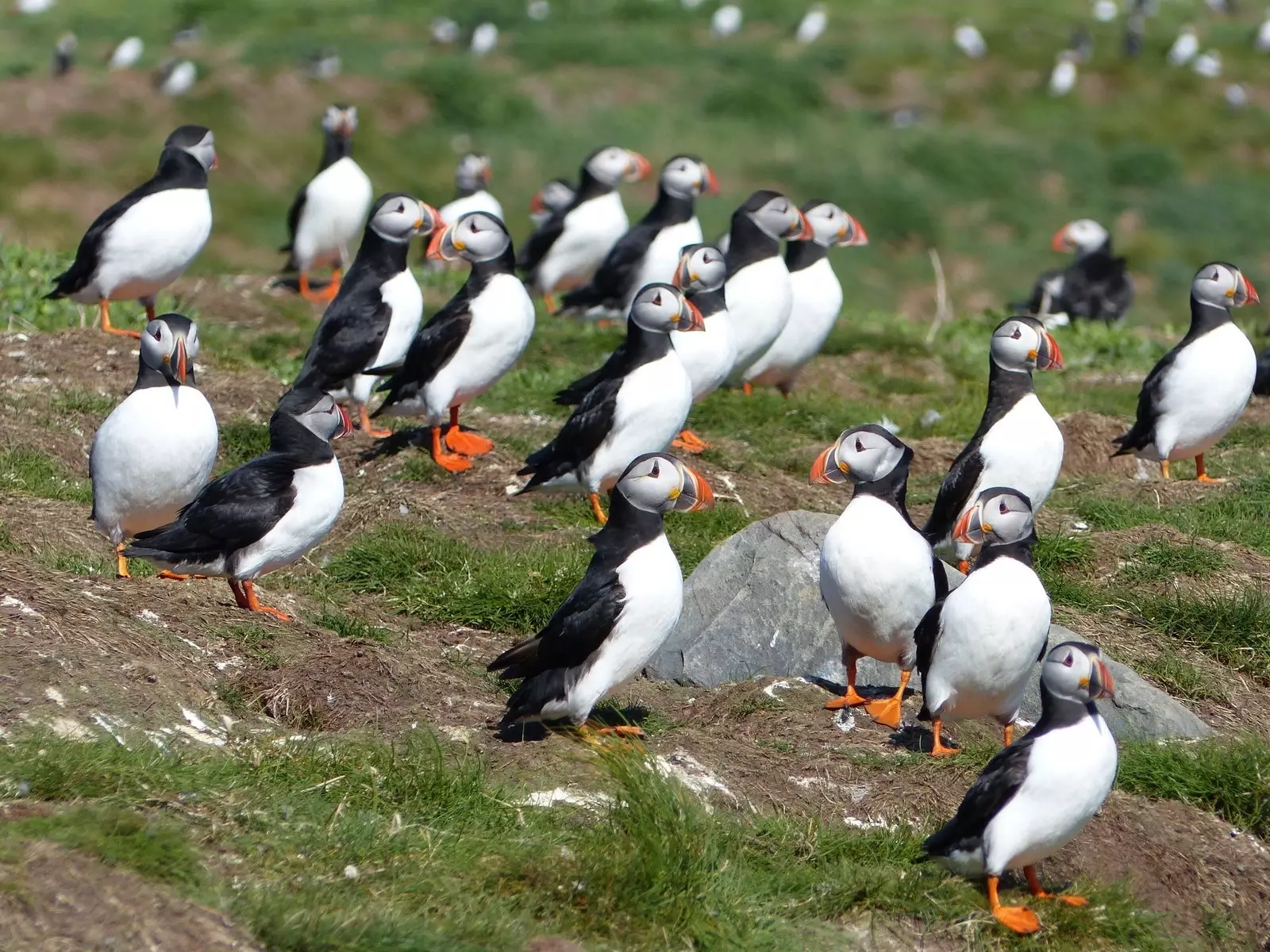
The first puffins arriving at the Farne Islands.
The ** puffins **, a seabird similar to the penguin, inhabit the Atlantic, especially in Iceland, Norway, Greenland and Northern England , on the Northumberland coast. Currently in the world, according to the red list (which indicates the world's endangered species), there are some 14,000,000 copies.
Last year, the English organization that watches over the environment in England, Wales and Northern Ireland, National Trust , accounted for 43,752 couples, 0.5% less than in 2018.
But in the last 26 years, these seabirds have found in the Farne Islands a place to nest and breed when March arrives . It is curious that this species nests on the ground, creating its own burrows, to which they return each year with their partners, they are for life , as it happens with the storks.
In 2003 they registered more than 55 thousand pairs , but a sudden drop in one of your favorite foods, sand eel , caused the number to decrease significantly. Rising temperatures cause the eels to move to cooler waters, leaving the puffin without its main livelihood. That and predators are their main threat.
The Farne Islands are one of the best habitats for their reproduction, because they lack predators and have quiet places where they can nest and mate . This year has also been like this, but they have also been able to nest in places that were previously traveled by visitors to the islands.
“The puffins were first recorded on the Farnes Islands on March 20, although they were first seen a couple of weeks earlier when they were rafting on the islands. This is something they do early in the season when they gather in groups at sea before moving to the islands,” says Harriet Reid, National Trust ranger on the Farne Islands.
And she adds: “They build their nests in burrows and, in the absence of visitors, we can see them expanding their usual nesting sites to new parts of the islands. Areas such as picnic spots in Inner Farne , which are generally popular with our visitors, have received new guests this year.”
Thanks to the pandemic, this species has had more privacy to reproduce this year, although as confirmed by the National Trust, have not been able to count on the necessary means to count the number of birds that have arrived this year.
"It's very unlikely that we'll be able to do our typical detailed study of seabirds because we can't have a full ranger team. Instead, we'll keep records of any significant changes we're noticing within the colony through our observations, as well as monitoring images from remote cameras that we have set up at key points on the islands."
